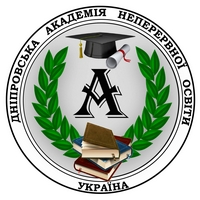TRANSVERSALITY AND MULTIRATIONALITY OF ENGINEERING THINKING: WAR AND PEACE OPTIONS
Abstract
The article examines the phenomenon of engineering thinking in the context of a paradigm shift from scientific research to technological engineering. These changes delineate a new plane of research, where engineering thinking and engineering activity receive a new configuration that cannot be reduced to a linear understanding. The issue of representation of engineering thinking requires the involvement of an interdisciplinary methodology. The purpose of the article is to analyze, firstly, to explore engineering thinking as a multi-essential phenomenon, secondly, to characterize transversality and multi-rationality as attributive characteristics of engineering thinking; thirdly, to highlight the social significance of engineering thinking in war and peace options. To define engineering thinking, the concept of «design thinking» is used, which overcomes the understanding of the latter as reproductive thinking. The application of such concepts as «transversality» and «multirationality» allows to investigate engineering thinking as a phenomenon that flexibly responds to challenges and acquires the importance of a mediator whose task is to create projects to resolve existing contradictions and crises. Turning to the «interiorization – exteriorization» system allows you to represent the challenges that the community puts forward to the activity of the human engineer and to articulate the creative activity of the latter. The rhizome character of engineering thinking is emphasized, which overcomes its understanding only in the context of cognitive conceptualization, that is, in the system of abilities, skills, etc. Emphasis is placed on the expediency of using the affective dimension as a manifestation of independent thinking and testifies to the multi-rationality of engineering thinking. In this connection, intellectual traits («intellectual courage», «intellectual empathy», «justice», etc.) act as existentials that construct engineering thinking. We are talking about an engineer. The role of engineering in post-conflict scenarios is considered, which consists in helping to restore and stabilize society, ensuring its security in peace options. It is noted that engineering thinking plays a key role in the adaptation of military technologies.
References
2. Попова Л. М. Еволюція терміна «трансверсальність» у сучасному науковому просторі: зарубіжний досвід. Педагогічні науки. 2022. Вип. 99. С. 52–57.
3. SpaceX взяла на роботу 14-річного вундеркінда. URL: https://tsn.ua/tsikavinki/spacex-vzyala-na-robotu-14-richnogo-rozrobnika-2347942.html (дата звернення: 24.02.2024).
4. Шваб К. Четверта промислова революція. Формуючи четверту промислову революцію. Харків: КСД, 2019. 416 с.
5. Banse G., Hause R. Technik und Kultur. Das Beispiel Sicherheit und Sicherheitskultur(en). URL: https://www.zak.kit.edu/downloads/Hauser-Banse_Hauser_Wildau_final.pdf (accessed: 09.02.2024).
6. Carpenter S. R. Philosophical Issues in Technology Assessment. Philosophy of Science. 1977. Vol. 44. No. 4. Des. P. 574–593. URL: http://www.jstor.org/stable/186940 (accessed: 12.01.2024).
7. McLuhan M. Understanding Media: The Extensions of Man. URL: https://designopendata.files.wordpress.com/2014/05/understanding-media-mcluhan.pdf (accessed: 12.02.2024).
8. Niewoehner R. J. A Critical Thinking Model for Engineering. URL: http://wvvw.cdio.org/files/document/file/Niewoehner.pdf (accessed: 12.12.2023).
9. Paul R. W., Elder L., Critical Thinking: Tools for Taking Charge of Your Professional and Personal Life. Prentice-Hall, Upper Saddle, NJ, 2002.
10. Ropohl G. Knowledge Types in Technology. International Journal of Technology and Design Education. 1997. Vol. 7. P. 65–72. URL:https://doi.org/10.1023/A:1008865104461 (accessed: 27.12.2024).
11. Ropohl G. Philosophy of socio-technical systems. Philosophy & Technology. 1999. Vol. 4. No. 3. Spring. P. 59–71. URL: https://scholar.lib.vt.edu/ejournals/SPT/v4n3/pdf/ROPOHL.PDF (accessed: 21.12.2023).
12. Waks Sh., Trotskovsky E., Sabag N., Hazzan O. Engineering Thinking: The Experts’. Perspective International Journal of Engineering Education. 2011. Vol. 27. No. 4. P. 838–851.
13. Welcome to CDIO. URL:http://www.cdio.org/ (accessed: 11.10.2023).

 ISSN
ISSN  ISSN
ISSN 

